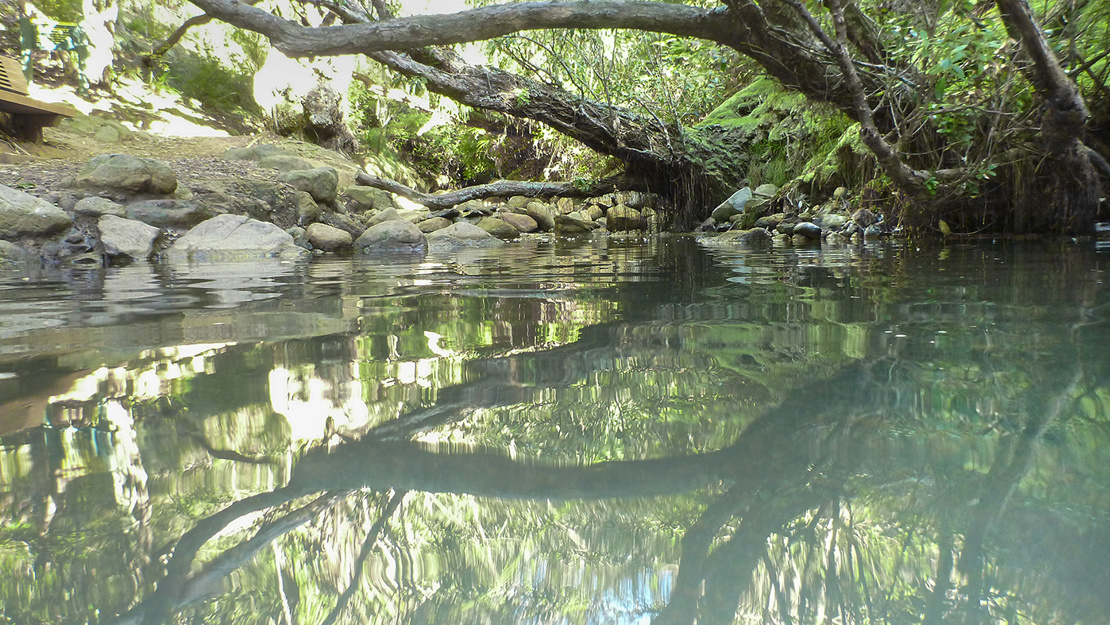Geothermally-heated water and steam ecosystem (GT2)
Geothermal ecosystem
About this ecosystem
This ecosystem occurs where there are volcanic fields and tectonically active areas. Ground water is heated, allowing it to dissolve minerals it then brings to the earth’s surface.
There is only one remaining place in Auckland where you will find this ecosystem in its natural state. This is at the Kaitoke Hot Springs on Aotea / Great Barrier Island.

Flora and fauna in this ecosystem
Geothermally-heated water contains a wide diversity of organism types, including micro-organisms like fungi, bacteria and amoeba.
A small number of ferns may be present at sites where streams intersect with or are next to geothermally heated waters. Where cool or temperate water collects, geothermal wetlands may support plants commonly found in coastal wetlands such as:
- oioi
- arrow grass
- coastal cutty grass.
Mātātā (fernbird) often live in the scrublands on the edges of these ecosystems.
Downstream wetlands provide habitat for many birds, including:
- matuku-hūrepo (bittern)
- kāhu (harrier)
- pūkeko
- kererū (New Zealand pigeon)
- kōtare (kingfisher).
Threats to this ecosystem
Too little data exists for this ecosystem to be given a threat classification.
But, we know that this ecosystem is highly vulnerable to the effects of land development, such as:
- farming
- forestry
- mining
- flooding.



